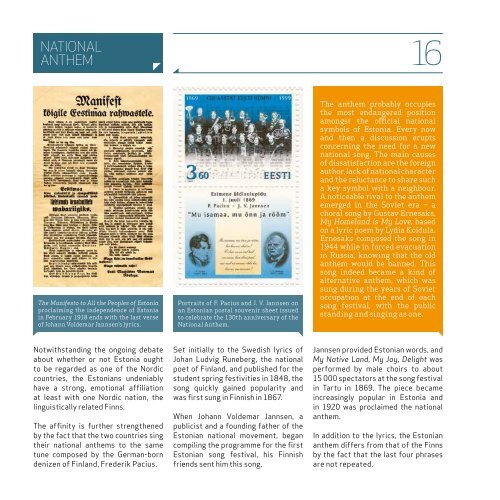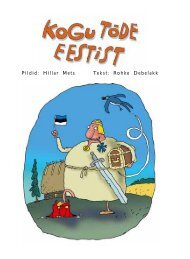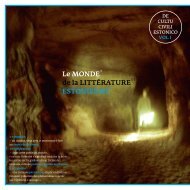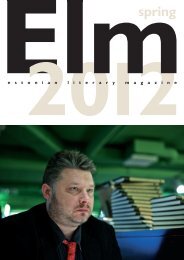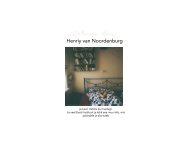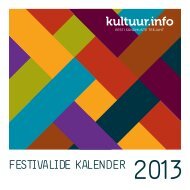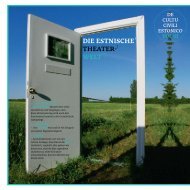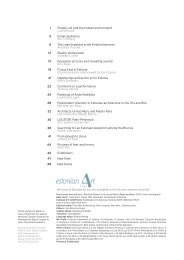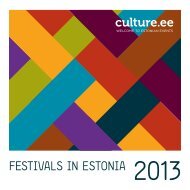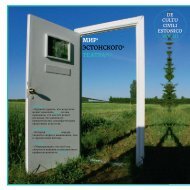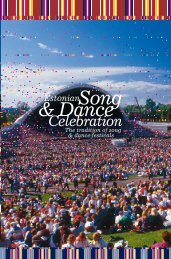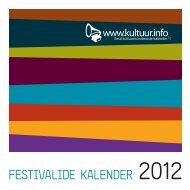FACTS ABOUT ESTONIA
FACTS ABOUT ESTONIA
FACTS ABOUT ESTONIA
You also want an ePaper? Increase the reach of your titles
YUMPU automatically turns print PDFs into web optimized ePapers that Google loves.
NATIONALANTHEM16The Manifesto to All the Peoples of Estoniaproclaiming the independence of Estoniain February 1918 ends with the last verseof Johann Voldemar Jannsen’s lyrics.Portraits of F. Pacius and J. V. Jannsen onan Estonian postal souvenir sheet issuedto celebrate the 130th anniversary of theNational Anthem.The anthem probably occupiesthe most endangered positionamongst the official nationalsymbols of Estonia. Every nowand then a discussion eruptsconcerning the need for a newnational song. The main causesof dissatisfaction are the foreignauthor, lack of national characterand the reluctance to share sucha key symbol with a neighbour.A noticeable rival to the anthememerged in the Soviet era – achoral song by Gustav Ernesaks,My Homeland is My Love, basedon a lyric poem by Lydia Koidula.Ernesaks composed the song in1944 while in forced evacuationin Russia, knowing that the oldanthem would be banned. Thissong indeed became a kind ofalternative anthem, which wassung during the years of Sovietoccupation at the end of eachsong festival, with the publicstanding and singing as one.Notwithstanding the ongoing debateabout whether or not Estonia oughtto be regarded as one of the Nordiccountries, the Estonians undeniablyhave a strong, emotional affiliationat least with one Nordic nation, thelinguistically related Finns.The affinity is further strengthenedby the fact that the two countries singtheir national anthems to the sametune composed by the German-borndenizen of Finland, Frederik Pacius.Set initially to the Swedish lyrics ofJohan Ludvig Runeberg, the nationalpoet of Finland, and published for thestudent spring festivities in 1848, thesong quickly gained popularity andwas first sung in Finnish in 1867.When Johann Voldemar Jannsen, apublicist and a founding father of theEstonian national movement, begancompiling the programme for the firstEstonian song festival, his Finnishfriends sent him this song.Jannsen provided Estonian words, andMy Native Land, My Joy, Delight wasperformed by male choirs to about15 000 spectators at the song festivalin Tartu in 1869. The piece becameincreasingly popular in Estonia andin 1920 was proclaimed the nationalanthem.In addition to the lyrics, the Estoniananthem differs from that of the Finnsby the fact that the last four phrasesare not repeated.


